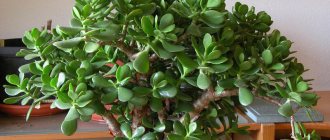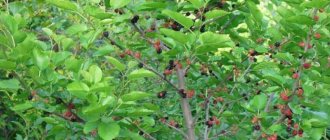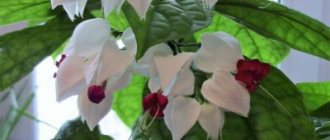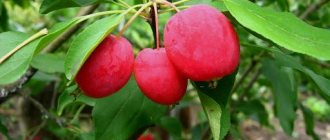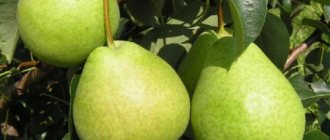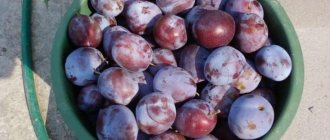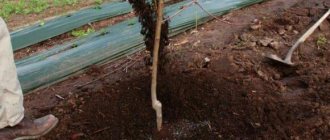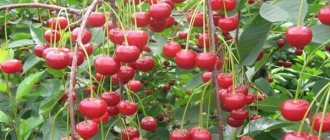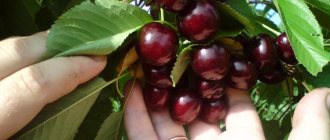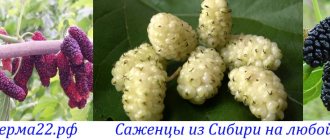The paulownia plant, or imperial Adam's tree, is part of the Paulownia family. This genus is represented by several species, and it includes semi-evergreen and deciduous trees. This heat-loving plant is most often found in subtropical climates. It grows extremely fast and can reach about 300 cm in height. Most of the species are highly decorative and are cultivated as park and garden crops. The wood of such a tree is very valuable. It is distinguished by its lightness and wear resistance; it is used for turning and construction work.
Description
Paulownia is a genus of evergreen and semi-evergreen deciduous trees, which includes about 10 varieties. The homeland of most of them is China, where Paulownia is considered one of the national plants. Gradually, Paulownia began to be grown in other parts of East Asia: Japan, Vietnam, Korea, Laos), then in Europe.
IN THE PHOTO: Paulownia 'Bellissia' plantation in Serbia.
At different times, Paulownia was classified as a member of different plant families - Norichnikov and Bignonyev. Today the genus is recognized as the only representative of the Paulowniaceae family.
The “official” name of the plants of the genus was received from biologists Joseph Zuccarini and Philipp Siebold in honor of the daughter of Emperor Paul I, Anna Pavlovna, who lives in Weimar. For its ability to be reborn in any difficult conditions, Paulownia was nicknamed Adam's tree. Another “name” of Paulownia - Princess Tree - was given to the plant for its external grace and the love of Chinese princesses for its beauty. Paulownia was often grown at imperial courts, which is why it was called the Dragon Tree - by analogy with the well-known symbol of power of the rulers of China.
The height of trees of this genus in the wild and warm climates can reach 20 meters or more. But in gardens and parks in central Russia, they, as a rule, do not grow higher than 2–3 m.
The straight trunk of Paulownia is of regular cylindrical shape. The shape of the lush crown (ovoid, round or spreading) depends on the type of plant and the method of pruning the tree.
Paulownia sometimes attracts the gaze of passers-by with its three-lobed or deep-toothed wide leaves. Their length is up to 20 cm, and in some species - up to 50 cm. Planted on long petioles, the leaves of the Adam's tree are located opposite on the branches.
IN THE PHOTO: The giant leaves of the Adam's tree seem to hint that our male line ancestors had something to cover up.
During the flowering period, Paulownia is decorated with paniculate apical inflorescences of white, pinkish or purple large (about 6 cm in diameter) flowers with a bell-shaped calyx. These flowers are slightly reminiscent of Gloxinia in color and shape.
IN THE PHOTO: Color of Adam's tree.
At the end of the flowering period, capsule fruits with small winged seeds form and ripen. The seeds can remain on the tree all winter until the weather warms up.
IN THE PHOTO: Fruits of Paulownia imperial.
Popular varieties
The early flowering variety of Paulownia Fortune 'Fast Blue' (aka 'Minfast'), widespread in the southern regions, is distinguished by a subtle pleasant aroma of blue-violet flowers.
Two decorative forms of Paulownia tomentosa have taken root well in Russian gardens and greenhouses - 'Coreana' with unusual yellow-green leaves and deep purple flowers, and 'Lilacina' (dense green foliage, soft purple inflorescences). In northern regions they often grow as herbaceous perennials.
IN THE PHOTO: Blooming Paulownia Fortunea variety 'Fast Blue'.
Alternative names for paulownia
The main name of paulownia (paulownia) was acquired in honor of Anna Pavlovna - the daughter of Emperor Paul 1 - from the botanist J. Zuccarini , who first described the tree after visiting the Land of the Rising Sun. But this is far from the only name of the plant.
Adam's tree is the so-called paulownia for its vitality , ability to quickly recover from serious damage and unpretentiousness to external conditions.
Sapphire, imperial, dragon or princess tree - Paulownia received these beautiful names in its homeland, where many stories and legends are associated with it. Love for the flowering plant is attributed to many royalty.
Growing
In open ground:
Paulownia is one of the few plants that combines high decorativeness and unpretentiousness in cultivation and care. The only significant disadvantage of this tree is its low winter hardiness. In the gardens of the Krasnodar region and Crimea, where the climate is quite warm and humid, Paulownia quickly turns from a seedling into a luxurious spreading tree. In areas with colder climates, its shoots are easily frostbitten when it gets cold. But growing Paulownia as a perennial can be successful even there, if it is insulated in time - the plant is reborn quite well.
For growing Paulownia, soil of varying acidity is suitable: from slightly acidic to highly alkaline, ideally medium-nutrient light soil or loam.
Outdoors, it is best to plant it in a sunny place, in a 1x1 m hole. You need to place a support peg there, then, in the center of the planting hole, the plant itself. It is tied to a support, covered with soil and watered abundantly.
During the first years of growth, garden Paulownia needs regular watering and formative pruning to create a branched crown. Fertilizing it is also important. You can read about how to properly feed young and mature trees at different times of the year in our articles: “Autumn feeding of the garden: what you shouldn’t forget” and “Fertilizing the garden in the spring.”
IN THE PHOTO: Young shoots of Paulownia in the garden.
In room conditions:
It is recommended to plant indoor Paulownia in a ready-made substrate for ornamental foliage plants. The container with the tree is placed on the southeast or southwest window.
It is important that the soil in the Paulownia pot is not too wet, otherwise the maturation of the wood may slow down. Therefore, watering should be very moderate (only until the plant is two years old is it watered generously once every two weeks).
Paulownia is regularly fed with mineral fertilizers throughout the growing season. Feeding stops as soon as the leaves begin to fall.
Planting paulownia seedlings in open ground
For planting, choose an open sunny area. The soil reaction is acceptable from slightly acidic to strongly alkaline. Loose, moderately nutritious loam is ideal.
- Dig a planting hole for a slightly larger seedling along with a lump of earth.
- We install the plant in the center, straightening the roots a little; it is advisable to dig a peg, since the stem is fragile and is in no hurry to become lignified.
- Tie it to a support, add soil and water it, the root collar should be flush with the soil surface.
- To ensure that the trunk grows evenly, choose a site that is protected from strong gusts of wind.
This is interesting: Slime Onion - cultivation and care
Pruning a mature tree is done very delicately. It is advisable to treat the cut areas with garden varnish.
Diseases and pests
Paulownia is often affected by blackleg, especially when the watering regime and temperature are violated, or excess air and soil humidity. To prevent the disease, preventive treatment of soil, seeds and seedlings with Baktofit and Fitosporin is recommended. The same fungicides can cure diseased plants.
It happens that scale insects and aphids appear on trees, especially weak and young ones. Modern insecticides will get rid of harmful insects on indoor and garden Paulownias. You can find out all the details about these drugs and the intricacies of their use from our publication: “Insecticides: help in pest control.”
Paulownia Shan-Tong (Hybrid)
Zone 6 (-23.5° to -18°C)
Paulownia Shan Tong is a hybrid between the species P. tomentosa and P. fortunei. When crossing, such qualities as cold resistance and growth rate were associated, characterized by straight growth of the stem and a narrow shape of the tree crown. Can be grown in both the colder regions of Germany and also in the warmer regions of southern Europe. Due to their narrow canopy, more trees can be accommodated per hectare. P. Shan Tong is currently the most suitable type of Paulownia for investing in valuable tree plantations as well as biomass plantations. The varieties “Nordmax 21” and “Royal treeme”, well known in Germany under the brand name, are also hybrids between the species P. tomentosa and P. fortunei.
Reproduction
Cuttings:
The easiest and most convenient way to propagate Paulownia is by cuttings. Separated from the mother plant at the end of summer or early autumn, the offspring is placed in a prepared substrate for the cold months. After the completion of spring frosts, it is planted in open ground so that the grown stem rises 2–3 cm above the ground. If two shoots grow from a cutting, the weaker one is usually removed when it reaches 10 cm in height.
In the northern regions, when placing cuttings in a basement, on a veranda or loggia, where the temperature can drop to 0°C or below, they must be in protected ground. A damp mixture of peat and sand is well suited for storing cuttings.
Growing from seeds:
You can propagate Paulownia by seeds, but this method is much more complicated. It is recommended to sow freshly harvested seeds, which are pre-germinated at a temperature of +30°C. They are very photosensitive, so they should be sown on the surface of the soil, and not buried into it.
IN THE PHOTO: Paulownia seeds (Paulownia elongata)․
The sown material is sprayed with a spray bottle, covered with glass, regularly ventilated in such a mini-greenhouse for ten days, and only after that is transferred to normal conditions of detention. Do not overdo it with watering Paulownia seeds to avoid rotting and mold.
It is not easy to plant grown seedlings, because their root system is very vulnerable. It is important to choose the right moment for transplantation: the roots of the seedlings should have time to get stronger, but not yet get mixed up with each other.
Paulownia - the tree of the future
Paulownia
(lat.
Paulównia
, family Paulowniaceae) or
Adam's tree
is a tall perennial (up to 15 - 20 m in height) and fast-growing deciduous plant with very large leaves (from 20 cm to 50 cm) and beautiful fragrant inflorescences (up to 30 - 50 cm long) of soft purple (sometimes white) flowers. Distributed in North America, Europe and Asia as a valuable garden crop for regions with warm and humid climates. And recently, with the search for alternative energy sources, it has gained great popularity as a raw material in bioenergy. The growth rate of the tree is faster than all woody plants existing in the world, and already at the age of 8–9 years its wood reaches full maturity. Paulownia leaves are also unique in their chemical composition. They contain up to 20% proteins (proteins), their taste characteristics resemble alfalfa and clover, therefore they are a valuable feed in livestock farming. Can also be used for salads. In addition, they are able to absorb 10 times more carbon dioxide than the leaves of ordinary trees.
The birthplace of the tree is China, where the plant is known as the Dragon tree
and is widely used not only in folk medicine, but also in pharmaceuticals.
Extracts based on paulownia leaves improve the functioning of the liver, gall bladder, kidneys, and eliminate lung problems. The seeds serve as a source for the production of industrial oil, and in ancient times they were used for the safe transportation of precious porcelain products. In Japan, images of paulownia (leaves and flowers) can be seen on coins and in heraldry. This plant (Paulownia tomentosa) has long been revered and cultivated as the Imperial Tree
. There are legends about it, Japanese folk customs and traditions are associated with it.
Since paulownia is characterized by unusually fast growth, and its wood has many valuable qualities (lightness; fire resistance, due to the low content of resinous substances; high tannin content, which serves as protection against damage by insects; low humidity, not exceeding 10 - 12%, excellent insulating and acoustic indicators), the plant is in high demand in the production of furniture, plywood, in aircraft and shipbuilding, in the manufacture of musical instruments, souvenirs, toys, sports equipment, wooden building structures (in traditional Japanese homes).
Another valuable quality of paulownia: thanks to its rapid growth and active development of the root system, plantings of this crop are able to prevent erosion in fertile soil horizons, and restore areas of land damaged by fires, landslides, mudflows and other natural destructions in the shortest possible time. A significant amount of its biomass, which enters the soil after leaf fall, enriches the soil with useful organic substances.
Paulownia is widely used for landscaping urban landscapes, in gardens and parks, and to create recreation areas. Its large leaves, pubescent on both sides, create magnificent shade and give coolness on a hot summer day. In addition, thanks to the large area of leaf plates, paulownia successfully purifies the air even in the most polluted and gas-polluted areas, and its root system cleanses the soil of heavy metal salts.
The tree is incredibly beautiful even during flowering, which occurs before the leaves fully bloom, in late spring - early summer. Clusters of bluish-lilac (sometimes pale blue or white) inflorescences consisting of large (up to 6 cm in diameter) bell-shaped flowers exuding a vanilla aroma with a slight almond note attract honey insects. Paulownia honey is similar in consistency and color to acacia honey and has very valuable medicinal properties. The culinary use of paulownia flowers as an exotic cone is interesting: in some European restaurants, flowers are filled with dessert to give the dish a special “delicious” aroma, sophistication and uniqueness. Paulownia is also valued as an aromatic raw material in perfumery and cosmetology (production of perfumes and creams).
Although paulownia belongs to the crops of the warm climate zone, it is also capable of growing in mid-latitude conditions. Despite the low frost resistance (can withstand short frosts down to –17° C), the tree is excellently restored by basal shoots. With age, the frost resistance of paulownia increases. In more severe conditions, it can be grown not as a tree, but as a perennial plant. The annual growth of paulownia is 1.5 m or more. In addition, in middle latitudes its leaves reach larger sizes (up to 75 cm in diameter). The only drawback is that in cold climates, paulownia does not have time to go through the flowering phase.
The crop is propagated by seeds and vegetatively. Paulownia loves well-drained, neutral soil. Can grow in sun and partial shade. Does not like strong winds (especially in the first years of development). Very easy to care for. The main difficulty is to prevent the soil from becoming completely waterlogged or drying out. You can grow the crop in gardens, greenhouses, in tubs and even pots (as a houseplant).
In autumn, ripened paulownia seeds spill out of the boxes and are carried by the wind, so you need to collect them before this moment. To germinate, seeds are poured on top of a well-moistened nutrient mixture, sprayed with a spray bottle and covered with glass or film for 10 - 14 days. With the emergence of seedlings, the glass (film) is removed daily for ventilation, first for a short time, and then gradually increasing this period. When the seedlings grow a little (usually after 10 days), they are planted in separate containers, being careful not to damage the root system.
The vegetative method of growing paulownia (cuttings or root shoots) is the simplest. To implement it, it is enough to separate the shoot from the donor plant (at the end of summer or autumn) and root it in a nutrient substrate. In the spring, the plant is planted in a permanent habitat, observing the necessary condition: the upper cut of the cutting should not rise above the ground level by more than 2 - 3 cm. When the shoots on the cutting grow to 10 cm, only one, the strongest, is left for further development. the rest are deleted.
The uniqueness of paulownia lies not only in the speed of its growth, but also in a whole range of useful qualities: valuable wood, nutritional qualities of leaves, aromatic properties of flowers, industrial use of seeds and vegetative parts (as raw materials in bioenergy). In addition, growing paulownia is not particularly difficult even for novice gardeners, and the beauty of the flowering tree will not leave anyone indifferent.
First steps after purchase
Any purchased Paulownia planting material, be it seeds, root shoots or young plants, needs to be inspected after purchase. The seeds are checked for germination.
Several universal methods for small seeds will help you test Paulownia seeds for germination. For example, you can bring an electrified ebonite stick closer to them: empty, weak seeds will stick to it, but the good ones will remain in place. Another simple test is to soak the future seed with water for 5–10 minutes. Spoiled seeds will float to the surface.
The cuttings and seedlings of the plant are carefully examined. Damage to the root system or stem, and, especially, dark and putrefactive spots should alert you.
If purchased cuttings or seedlings are not planned to be planted immediately, they are placed in a cool, dark place with average air humidity (45–60%). Under such conditions, planting material remains viable for some time.
IN THE PHOTO: An insulated loggia is perfect for growing young Paulownia seedlings.
Spreading
The homeland of most paulownia species is China and Japan. In the Land of the Rising Sun, this tree is one of the national symbols. The imperial coat of arms, government seals, awards, medals, and banknotes are decorated with images of its flowers and leaves.
The tree is widespread in the southern Chinese provinces and in several regions of Southeast Asia: Taiwan, Korea, Laos, Vietnam. It is found in flat, abundantly moist areas, no higher than 800 m above sea level.
Heat-loving species have taken root in lands with a similar climate: in the south of North America, in the Mediterranean, on the coast of Crimea, in southern Ukraine, in the Caucasus. Due to their high adaptability, certain species are grown in temperate climate zones.
Useful properties and uses of paulownia
- Paulownia is the best air purifier among all foliage plants .
Due to its large leaves, the tree releases a large amount of oxygen into the environment.
- If you plant about ten hectares of land with one paulownia, it will absorb about three hundred tons of carbon dioxide, and also stop a thousand tons of dust.
- The root is also quite useful.
Due to its deep ingrowth into the soil, it helps prevent erosion and weathering of the soil . Thanks to its beneficial qualities, paulownia is perfect for landscaping not only in private gardens, but also in city parks and alleys.
For your information.
The hardiest of the family are planted in mid-latitudes instead of species that take a long time to grow. Where is it used?
Paulownia wood is valued for its ability to not absorb moisture, making it less susceptible to fungal infection. The wood of the entire family is also quite light, although it has sufficient density.
The wood material has a matte gray-yellow tint. One cubic meter of wood weighs only 250 kilograms.
Interesting. Paulownia is twice lighter in weight than pine and has several times its agrotechnical characteristics.
Paulownia material is one of the best, it does not bend, does not crack, and is almost not susceptible to rotting.
It is quite easy to process with any tools, it holds the fasteners well and adheres well.
- Paulownia wood is often used in shipbuilding , for some parts of sports equipment, as well as musical instruments .
For example: some parts of boats and yachts, surfboards, skis and snowboards.
- from waste or low-quality material for packaging, as raw material for paper production, and also for wood fuel.
- High-quality material is used to make flooring and furniture, as well as for finishing materials.
- Since paulownia wood contains a sufficient amount of antimicrobial and antifungal compounds, it is suitable for finishing baths and saunas. It provides excellent sound insulation and heat resistance.
Medicinal properties of paulownia
The tree is also known in folk medicine. Flowers, leaves, and fruits of the tree are used there.
- And all this is also used in the manufacture of cosmetics.
- Extracts from flowers and fruits are used in preparations that improve hair growth, as well as for skin care.
- In medicine, the treatment of skin and back diseases is known.
- The leaves are known for their rich protein and carbohydrate content.
- They are often used to feed livestock and are superior in quality to alfalfa and legumes.
Secrets of success
Indoor and balcony Paulownias:
To make Paulownia feel comfortable, the plant needs to be replanted in a timely manner. Young fragile trees are replanted once a year, in the spring months. Paulownia should be moved carefully into a new container: although its roots are quite fleshy, the main ones are located very deeply and are easily vulnerable.
One of the important points of caring for mature indoor Paulownia, which is replanted as needed, is the annual replacement of the top layer of soil with fresh substrate.
Paulownia wood matures slowly, so strong winds can warp the tree. To maintain a beautiful, straight trunk shape, you need to place Paulownia in a place protected from the winds. Also, this tree does not tolerate drafts.
Garden trees:
For Paulownia, freezing of young shoots and flower buds (during late frosts) is especially dangerous. Therefore, it is worth taking care in advance to insulate the tree with lutrasil or other materials if a sudden cold snap is expected. At a young age, it is customary to cover garden Paulownias completely for the winter.
Proper, delicate pruning of outdoor Paulownia is important. Wounds caused by pruning shears heal very poorly. Be sure to treat the cuttings formed after removing excess shoots with garden varnish.
Caring for paulownia in open ground
In the first years of growth, seedlings will require careful attention: regular watering, loosening the soil, applying fertilizers.
- Water approximately once every 7-10 days, more often in severe drought.
- In the spring, feed with nitrogen-containing fertilizers: for trees up to 5 years old, a couple of handfuls of complex mineral fertilizer are enough.
- Around the beginning of November, before frosts have yet hit, apply potassium-phosphorus fertilizer.
Possible difficulties
Unaesthetic crown.
Reason: untimely or poor-quality pruning.
Poverty of spring blossoms.
Causes:
- failure to follow the rules for caring for the plant during winter dormancy.
- nutritional deficiency. The need to apply complex fertilizer for flowering plants.
Yellowing and drooping of leaves.
Reason: insufficient watering.
Pallor of leaf blades and inflorescences.
Reason: lack of sunlight.
Darkening, rotting and death of sprouts.
Reason: excess moisture in the soil.
Paulownia tree: description, photo, planting and care, reproduction
Adam's tree, sapphire tree or dragon tree are all names of one plant, in the botanical classification known as Paulownia from the genus and family of the same name. It is a real leader among hardwoods in terms of growth rate and has high-quality wood. However, this is not why gardeners and landscape designers value it. Paulownia is a tree that has an incredibly exotic and beautiful appearance, especially during the flowering period. It is unpretentious in cultivation, grows quickly, but is thermophilic. How to grow it from seeds, features of planting in the ground, rules of care - you will find all this in the article.
Interesting facts about Paulownia
Paulownia is not only an unusually beautiful, but also a very useful plant. Its wood is widely used in construction, exterior and interior decoration of buildings, and furniture production. The finest veneer for covering business cards is also made from this wood.
IN THE PHOTO: What will this felled Paulownia turn into - an interior item, a cover for a business card, or perhaps an elegant oriental souvenir?
In the East, medicinal and cosmetic products have been produced from Adam's tree for centuries. Medicines containing Paulownia extract help with diseases of the lungs, liver, gallbladder and gastrointestinal tract. In cosmetic creams and serums, extracts from the leaves and flowers of this plant have a powerful antioxidant, whitening and rejuvenating effect.
Paulownia brings considerable benefits to both people and our smaller brothers.
The high content of proteins and nutrients makes it possible to produce inexpensive and nutritious fodder for herbivores from Paulownia leaves. Editorial team LePlants.ru
Paulownia: varieties and types of beautiful trees
Paulownia is also called the princess tree, royal empress tree or foxtail tree, and is a fairly tall, fast-growing tree, up to 15 m tall. It is commonly grown for its abundance of blue-lavender flowers that bloom in early spring. Paulownia tree is widely grown for its valuable wood, which dries quickly and does not warp, bend or split and has a very low shrinkage rate.
Under favorable conditions, paulownia quickly grows into a branched, very presentable shady tree.
The resulting hybrids incorporate the positive properties of the mother plants, and the end product is a tree that is even stronger, more flexible and more versatile in use.
